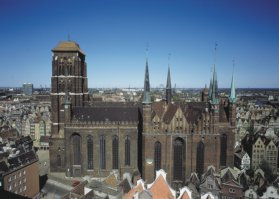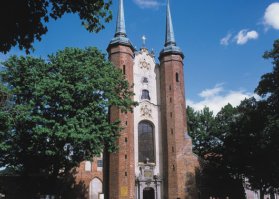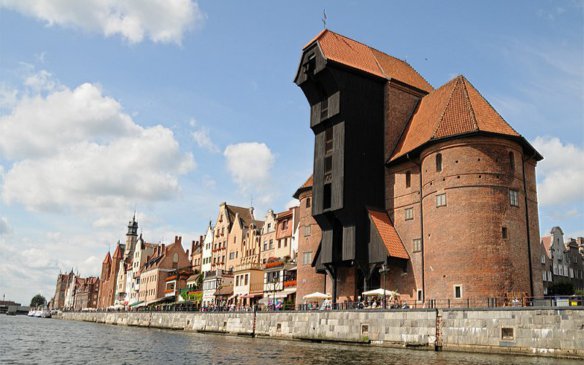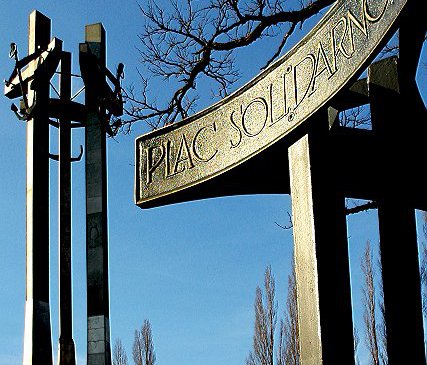

Thanks to its one thousand years of history Gdansk abounds not only in secular buildings, but also in shrines. There are three most significant churches that deserve special attention: St. Mary’s Church, Oliva Cathedral and St. Bridget’s Church. The latter made its name as a memorial to Poland’s recent history related to the Solidarity movement, and also thanks to its unique amber main altar.
St. Mary’s Basilica, also called the “crown of Gdansk”, is the largest Gothic brick church in the world. This is the only Polish church with its length marked on the floor of St. Peter’s Basilica in Rome. Its modest interior houses such works of art as the Gothic stone sculpture called the “Gdansk Pieta”, the copy of Hans Memling’s “Last Judgment” (the original can be found at the National Museum in Gdansk), or the largest Gothic astronomical clock world wide, measuring 14 metres in height – a “medieval computer” showing the abridged calendar of fixed holidays, the New Moon’s dates, the position of the Sun and Moon in relation to the Zodiac houses and many other features. Following the tour of St. Mary’s Basilica, we recommend to climb its 80-metre high tower with a vantage platform at its top which affords a splendid panoramic view of the city. The Basilica towers over the exit of the most beautiful street in Gdansk – St. Mary’s St. – with dozens of amber jewellery shops. The street is lined on both sides with quaint Gdansk town houses, most of them reconstructed after the destruction of the Second World War. It is worthwhile to stay in the city centre and walk to St. Bridget’s Church, which thanks to its location in the close vicinity of the Gdansk Shipyard played a significant role in the 1980s during the world-famous Solidarity strikes and during the Marshal Law. The numerous historic items collected inside remind visitors of those memorable events when the Gdansk shipyard workers, with the Solidarity movement, launched the chain reaction of political transformation not only in Poland, but also in other European countries. St. Bridget Church is also famous for its amber altar – a work still in progress – but already today recognized as the largest amber altar world wide. Once completed, the altar will be 12 metres high, 9 metres wide and will cover a surface of as much as 120 sq. metres.
Another historic monument recommended in this itinerary is Oliwa Cathedral renowned mainly thanks to its 18-century pipe organ, considered to be the largest instrument of this type in Europe at the moment of its being built. With a length of 107 metres, this shrine is the longest in Poland. It is surrounded by a beautiful park landscaped on the grounds of the former abbey orchards owned by the Cistercian monks. In the middle of the park the Abbots’ palace is located, which nowadays has been adopted as a Contemporary Art Museum. The park is abundant with plants, trees and vegetation brought here from all over the world. The scenic alleys of neatly trimmed treetops and bushes, the shimmering of the cascades of the Oliwski Stream, as well as the sumptuous flower beds lead the way towards the soaring Oliwa Cathedral popular with visitors due to its organ music concerts. During the summer season, concerts are held on an hourly basis and in the low season the sound of its unique pipes can be heard at least once a day.




